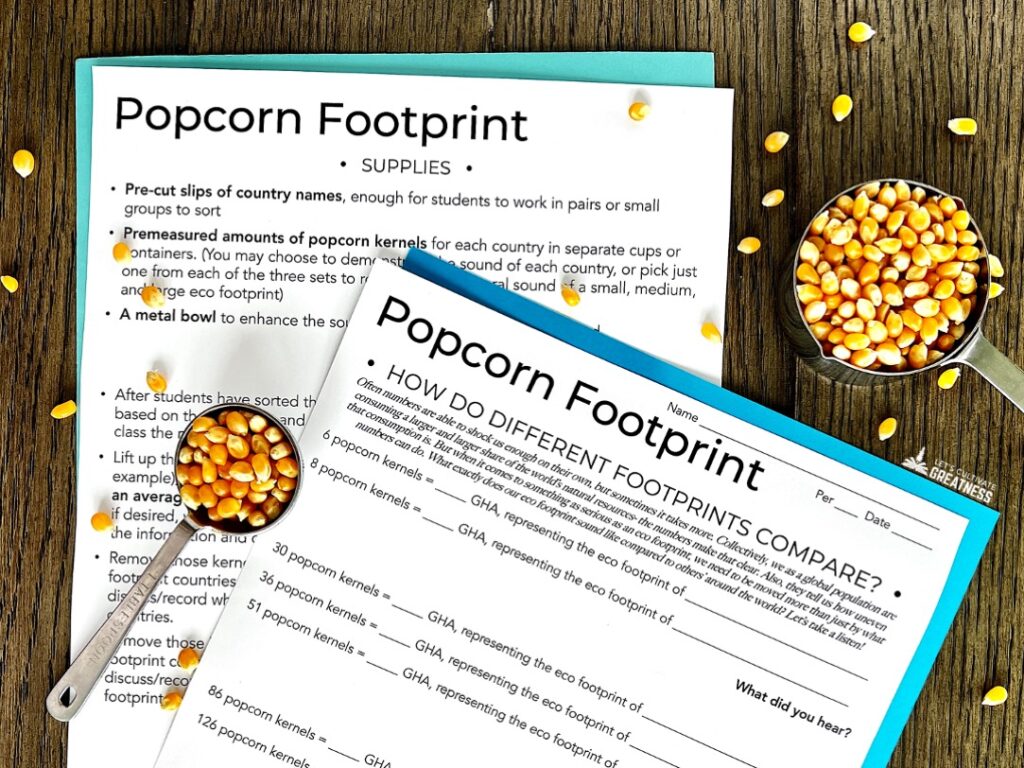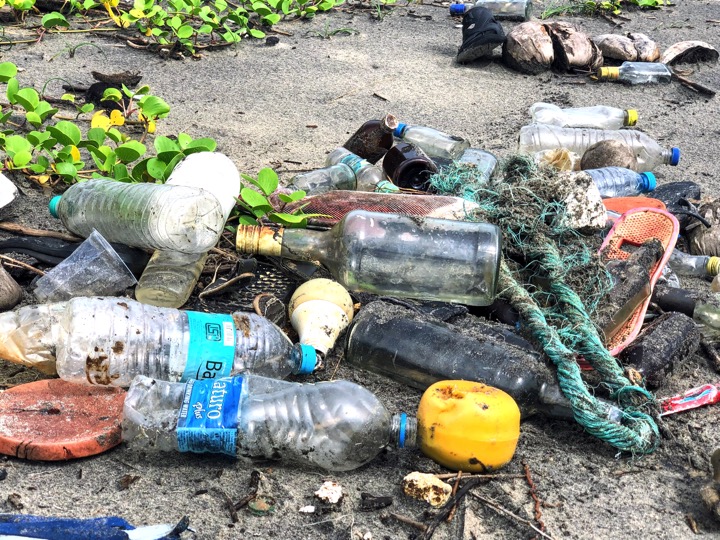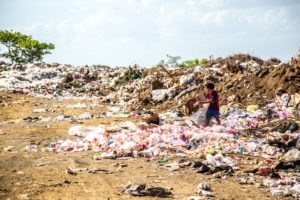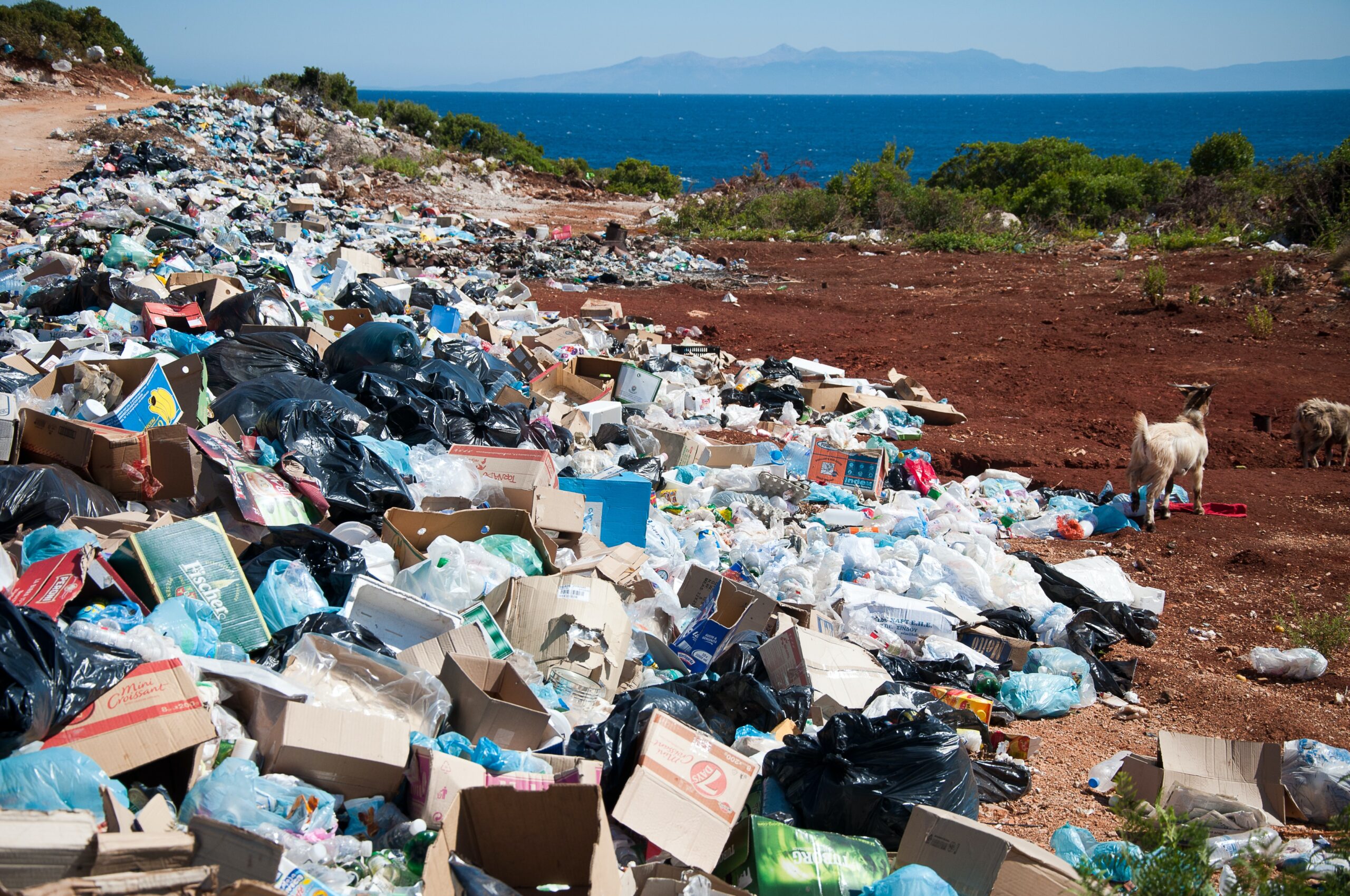One of my favorite classes to teach has been Contemporary Global Issues. That’s because it shows students how classic subjects like social studies and science are actually inseparable.
I’d describe the class as the crossroads of human geography, civics, current events, and environmental science, making it a perfect course for my seniors before sending them out into the real world.
Our inquiry units move from topics of poverty and standards of living, increasing resource consumption and globalization, and sustainability.
Teenagers naturally have limited ideas of how their lives match up with the rest of the world and the impact (good and bad) they can have on it. But this is the development stage where they can start seeing that.
That’s why it’s a privilege to share the urgency of climate change and sustainability with them in a way that gives them the agency to make a change.
Below are some great activity ideas to do that. The last one is my favorite, plus it’s a completely free lesson download.
1. Calculate your eco footprint
This one is a no-brainer activity to do with your students, and there are a bunch of calculators out there.
The Global Footprint Network’s footprint calculator is my go-to for an overall eco-footprint calculation. Its questions are easy enough for students to make good guesses and get a rough score.
The Nature Conservancy has a but requires a lot of specific numbers, like household electricity usage. This would be good for students to do at home with their parents.
And the organization GRACE has a visually appealing calculator that focuses specifically on determining water footprints.
2. Bring in memorable new stories
An absolute must in any social studies teacher’s toolbox is a subscription to a major national newspaper, like the New York Times or Washington Post, and their local one. You should have no problem finding daily news stories about natural resources and sustainability in some large-scale or singular way.
For a few years, I loved using this news story (and accompanying photos!) of 1980s Garfield-shaped phones washing up on the beaches of northern France for the last three decades to open an informal discussion into how every single toothbrush, shampoo bottle, and plastic wrapper we have ever used is still out there somewhere.
Recently, I’ve used this quirky essay by A.J. Jacobs on trying to live a day without plastic. I loved that it has an audio version to play.
Also, look for local issues or debates that hit home on a small scale. It could be as simple as a news story about your regional burger chain switching to paper straws or the city council debating more bike lanes.
Depending on what interesting stories pop up each year, I’ll use them as anything from formal whole-class reads to brief hooks for lessons I already have to article collections for students to choose from for a Socratic Seminar discussion.
Being fresh from the news desk helps make the abstractness of large topics, like climate change, much more memorable.
3. Show powerful images
You could do this a couple of ways.
First, I love using travel photography images as bell ringers.
For any geography or global issues course, pick a daily awe-inspiring image for your students to explore. I alternate between unbelievable landscapes (natural and humanmade) and fascinating peeks at fellow humans engaged in their ways of life.
More than anything else, these get straight to the point of the whole class—to develop empathy and commonality for the world’s people and respect for the planet’s natural beauty.
Post a photo and conduct a simple See-Think-Wonder protocol.
What do you see?
What do you think is happening?
What does this make you wonder?
National Geographic has several Instagram accounts that are great starting points for finding incredible images perfect for this. Their @natgeotravel account is my favorite to pull photos from.
Also, consider finding short video clips to introduce topics in your units.
One video I always show before we start the plastic section of our sustainability unit is this video that went viral of marine biologists removing a plastic straw from a sea turtle’s nostril.
Or this short video of landfills catching fire in New Delhi, India, when we cover garbage.
4. Bring in experts
And I don’t mean scientists!
The whole point of your geography class is to show how humans are more alike than different, so someone like Rick Steves should be your classroom’s patron saint.
As a travel guru who exudes everyday-guy-ness, he has made it his life work to get people excited to get outside their cultural bubble.
His lecture on how traveling is a political act and video series on why we should travel are proxies for the importance of studying geography and world cultures. These are great to watch if you are new to teaching this topic or struggling with answering students asking, “Why do I need to know this?”.
If you are teaching topics of sustainability and natural resources, then everyday people who have chosen to live with minimal eco footprints are your experts.
Happen Films and Exploring Alternatives are two YouTube channels with videos of all lengths and topics sharing how regular people choose smaller eco-footprint lifestyles, from tiny homes to homesteading to zero waste.
I like how exploring tutorials and reflections from fellow everyday people makes creating change more doable than a long list of ideas published by a government agency.
5. Simulate differing eco footprints
Effective simulations don’t have to be week-long events or require a list of supplies. I have found that some of the best ones are quick hooks for a larger main activity.
One of my favorites uses popcorn kernels and a metal bowl. Select a handful of countries to represent countries with small, medium, and large per capita eco footprints and convert them to popcorn kernels.
When you pour their kernels into the bowl, your students can see and hear the difference as they land.
For example, the developing country of Eritrea has a per capita footprint is .49 global hectares (gha), so assign that country five kernels. Argentina is right around three, so assign it 30 kernels, and so forth.
Use this Wikipedia list of every country’s average eco footprint to help pick example countries.
Make sure everyone is silent and pour slowly to get the full effect.
Over in my shop, I have a complete, done-for-you FREE lesson download of this activity for you to grab.

And be sure to check out my complete Global Issues curriculum if you want more inquiry- and student-centered lessons on population growth, globalization, natural resources, and sustainability. It’s a done-for-you course perfect for any Contemporary World Problems type of class.
Feature image photo credit: John Cameron





